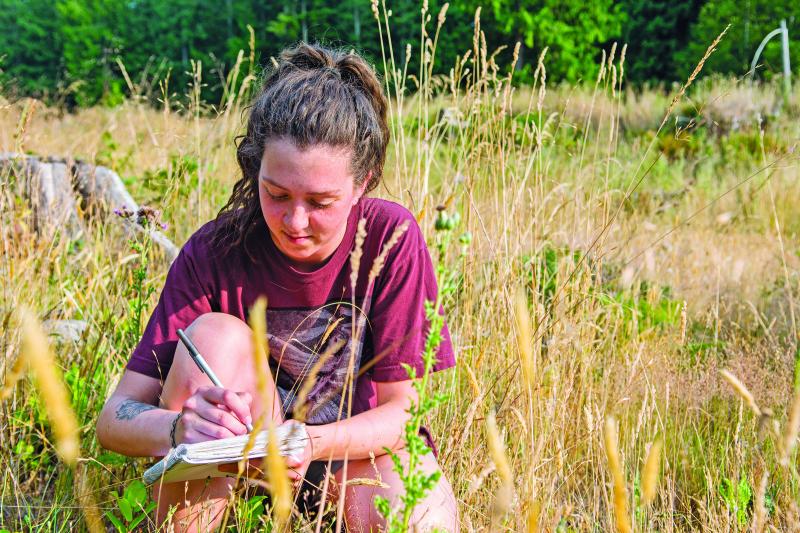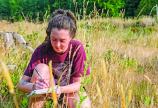Galiano Island field school breathes new life into learning
- Anne MacLaurin

In July, under a blistering hot sun, 15 students and environmental studies professor Dr. Eric Higgs waited to embark on a unique learning adventure at the Galiano Island Land Conservancy Learning Centre.
During the following week, as part of the Ecological Restoration field school, the students share meals together and work intensely on group projects—off the grid, with no internet, and with the outdoor environment of the island’s District Lot 57 as their principal classroom. The lot, owned by the Galiano Island Conservancy Association, was once an active logging and farming site. But now, it’s home to the Learning Centre, and Galiano Island residents want the land ecologically restored. That’s where the thinking, learning and labors of the students in the field school come in.
“Ecological restoration must be flexible in its design and the community needs to be on side,” says Higgs. “The students each took on a challenging project that included collaboration with the local community.”
Along with co-op work terms, practicums and international exchanges, field schools like this are provide dynamic learning opportunities at UVic—helping students apply what they learn in the classroom to the outside world.
Class participants for the field school came from a range of backgrounds. For example, Lindsay Kathrens, Jon Weller and Janine Lauder all came to the course with different academic histories. Kathrens is a double-major in environmental studies and geography, Weller is a grad student studying environmental history and Lauder is an English major with a minor in professional writing. During the intensive outdoor classroom experience, these differences became strengths.
“Being a history student,” says Weller, “my ordinary classroom experience entails a great deal of reading and being inside talking about those readings. I was really happy to be able to work and live outside while taking in the course information.”
“The highlight of the field school for me,” says Lauder, “was the hands-on learning and knowing that the project we worked on was being used for actual research for ongoing projects.”
“This field course provided all of us with valuable opportunities to engage in real action being taken to conserve and restore ecosystems,” says Kathrens. “All of the work we took part in was a contribution, in some way, to the Galiano Conservancy’s efforts. It was very rewarding.”
The students presented their projects at the end of the week to the Galiano Conservancy and to approximately 50 local residents. Opportunities were given to the audience for feedback and future consultation.
The student-proposed projects included an educational geocache adventure game, a food foraging forest, and a historical accounting and documenting of Lot 57. The common thread was that all 15 students experienced firsthand the impact of working in a rugged, remote island landscape. The classroom was spellbinding and how they engaged with each other, their instructor, and the community enriched everyone’s lives.
As one student put it, “this is how I want to do my learning.”
Higgs, who has taught two previous ES 441 field schools, delights in watching the students emerge from their academic shells to find themselves in this context. “It is such a profound and inspiring experience to work with bright students in a community setting—they come alive. I feel like I am doing my best teaching and facilitating during these classes.”
———
Explore other UVic field school experiences in the Ring:
- Applied theatre field school (India)
- Colonial Legacies field school (South Africa)
- I-witness Holocaust field school (Europe)
- Greek antiquities archaeological field school (Greece)

